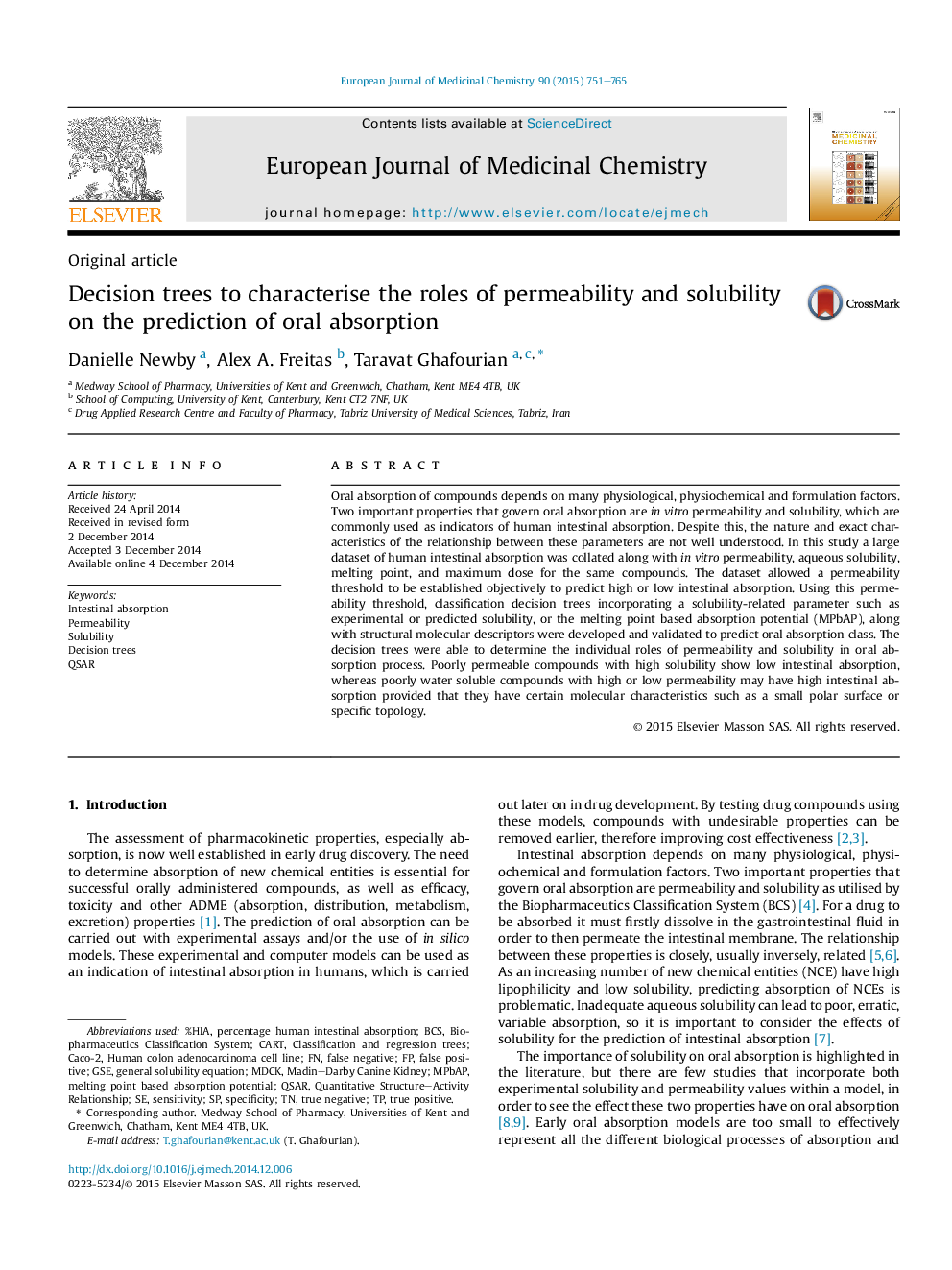| Article ID | Journal | Published Year | Pages | File Type |
|---|---|---|---|---|
| 1395519 | European Journal of Medicinal Chemistry | 2015 | 15 Pages |
•A large dataset of solubility, permeability and oral absorption was collated.•A permeability threshold was defined to predict oral absorption using decision tree.•Predictive decision trees were developed and the molecular descriptors explained.•Poorly permeable compounds with high solubility show low intestinal absorption.•Poorly water soluble compounds with high or low permeability have high absorption.
Oral absorption of compounds depends on many physiological, physiochemical and formulation factors. Two important properties that govern oral absorption are in vitro permeability and solubility, which are commonly used as indicators of human intestinal absorption. Despite this, the nature and exact characteristics of the relationship between these parameters are not well understood. In this study a large dataset of human intestinal absorption was collated along with in vitro permeability, aqueous solubility, melting point, and maximum dose for the same compounds. The dataset allowed a permeability threshold to be established objectively to predict high or low intestinal absorption. Using this permeability threshold, classification decision trees incorporating a solubility-related parameter such as experimental or predicted solubility, or the melting point based absorption potential (MPbAP), along with structural molecular descriptors were developed and validated to predict oral absorption class. The decision trees were able to determine the individual roles of permeability and solubility in oral absorption process. Poorly permeable compounds with high solubility show low intestinal absorption, whereas poorly water soluble compounds with high or low permeability may have high intestinal absorption provided that they have certain molecular characteristics such as a small polar surface or specific topology.
Graphical abstractFigure optionsDownload full-size imageDownload as PowerPoint slide
